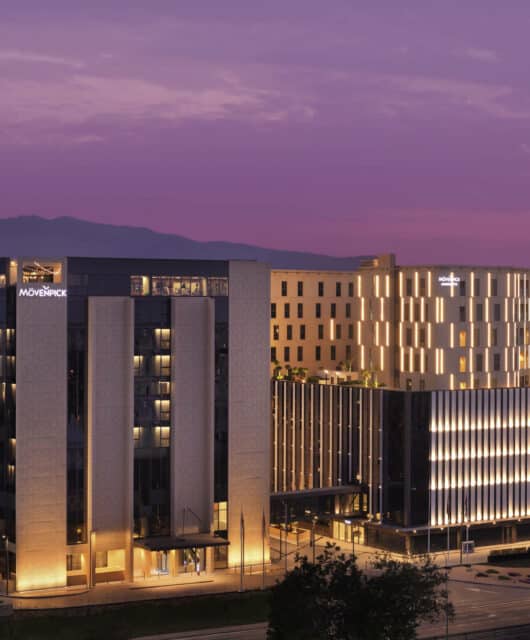 Dima Alkawadri, Assistant Professor, Interior Design, School of Textiles and Design, Heriot-Watt University Dubai, discusses designing workplaces in the face of societal change.
Dima Alkawadri, Assistant Professor, Interior Design, School of Textiles and Design, Heriot-Watt University Dubai, discusses designing workplaces in the face of societal change.
Over the past three years, there has been a significant shift in how we perceive and design our spaces. Priorities have changed, and many societal and cultural norms have influenced our design and décor ideas. While the importance of work-life balance has always been present, its crucial role has become more apparent since the pandemic. However, in terms of design, work-life balance is not limited to any specific location. In the past, work was typically confined to office space, but the pandemic and subsequent years have significantly altered the way we work. With non-essential workers suddenly forced to work from home, many people realised that their homes were not adequately equipped to provide a comfortable and functional workspace, regardless of size. Conversely, as people return to the office, conditions that were previously acceptable may no longer be sufficient.
Although the corporate setup often demands a specific appearance, office interior design has evolved beyond those limitations. The traditional office norms of closed meeting spaces, fixed desks and chairs, dull upholstery, lack of decor, and limited color options are no longer the office norms.
In the UAE, the average person spends between 35 to 40 hours at work each week. Although the workplace cannot provide the same level of comfort as home, it is crucial to offer a comfortable environment that supports physiological harmony and mental peace, allowing employees to perform their tasks efficiently. Offices are now incorporating time-out spaces or lounges, recognising the importance of providing recreational areas to promote well-being. These spaces are no longer limited to lunchrooms, with designers now creating areas such as gaming rooms equipped with table tennis and foosball, lounge chairs, and reading spaces. The shift towards creating recreational spaces is due to the growing demand for work-life balance, as people increasingly recognise the need to prioritize their well-being, especially when spending long hours in a corporate setting.
Wellness-related designing also gained significant importance. A practical addition to modern offices is the use of flexible electric desks that users can adjust according to their work style. These desks enable users to increase or decrease their height, allowing them to sit or stand while working. Although it may seem like a simple addition, this feature can significantly benefit those with spinal issues, fatigue, and posture problems, promoting physical comfort and reducing the likelihood of discomfort or pain.
According to the latest report from the Global Wellness Institute on the global wellness economy, ‘workplace wellness is projected to be the slowest-growing category in the future of wellness. Additionally, the Global Wellness Institute states that it is estimated to increase from USD48.5 billion in 2020 to USD58.4 billion in 2025, with an average annual growth rate of only 3.8 per cent. Companies are now shifting their focus (and budget) from compartmentalised “wellness programmes” towards more comprehensive approaches that address emotional, social, and financial well-being. The new approach toward employee well-being is more comprehensive and authentic.
Moreover, wellness and sustainability will continue to dominate the workplace interior design sector. A balanced workplace must address factors such as air and water quality, lighting and thermal comfort, and the need for a clutter-free space that fosters emotional and productive well-being. and with a focus on using materials and fixtures that are sustainable and environmentally friendly.
While some companies have returned to full-time onsite work, others offer flexible working opportunities to their employees. Agile office designs are an essential part of this flexible working approach, with office interiors focused on facilitating increased productivity and leisure areas allowing colleagues to socialise and take a break from work duties and support wellbeing as a result.
Along with recreational spaces, designers now also incorporate working areas that are more relaxed, such as meeting pods which can be open spaces with two seats, and call rooms – which are single units for employees to answer calls or take online or phone meetings. As a result, agile offices can improve collaboration, enhance job satisfaction, and reduce stress levels, ultimately leading to increased productivity.
Flexible working conditions have also had an impact on home offices. While dining tables and kitchen counters may have served as makeshift workstations in the past, people are now more conscious of their homework settings. As a result, comfortable desks, ergonomic chairs, and creatively designed spaces are now on design agendas.
The influence of societal and cultural changes of the past few years have impacted the design sector, and understandably, every major global phenomenon will directly affect how we design our workspaces.







